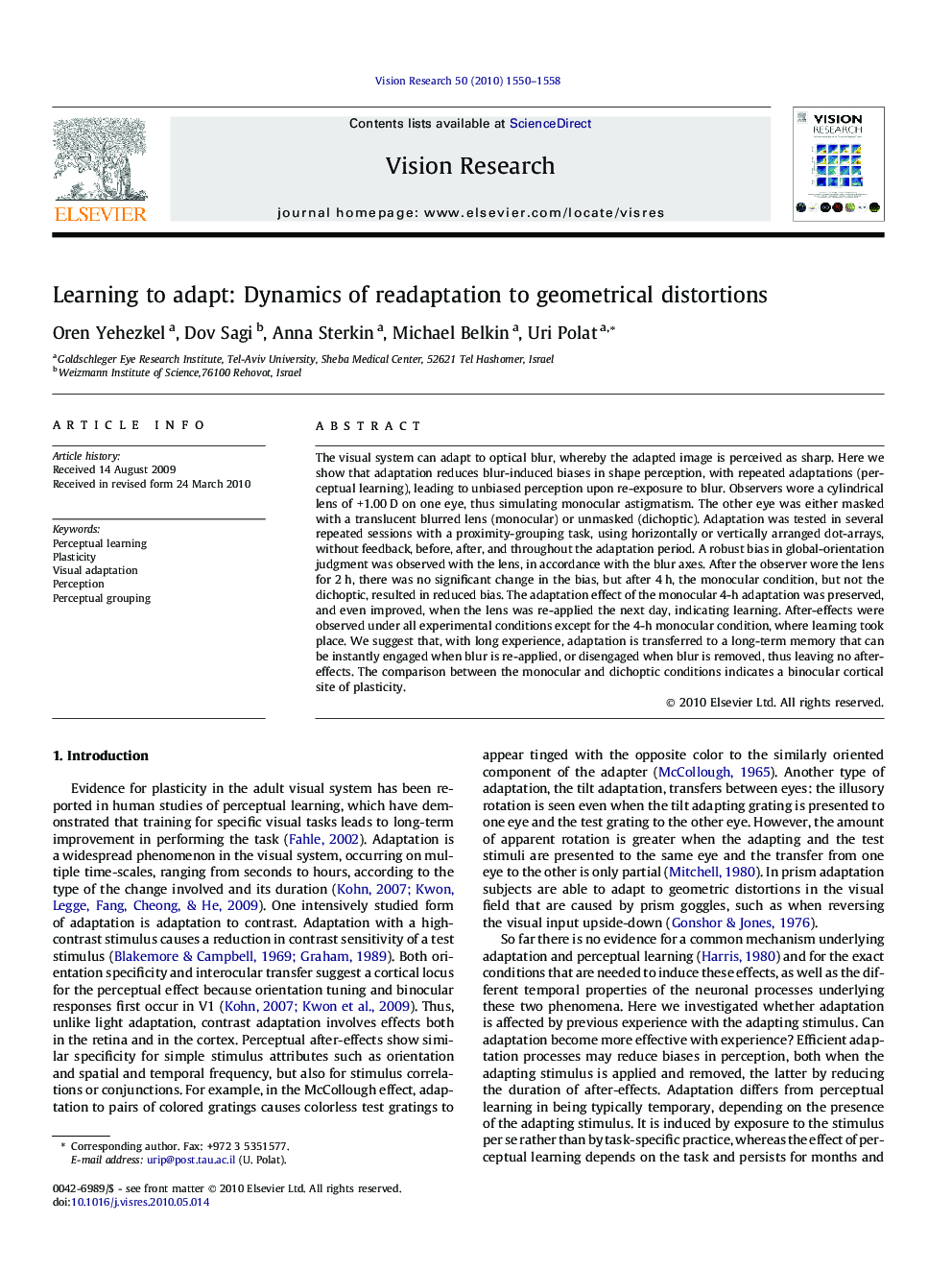| Article ID | Journal | Published Year | Pages | File Type |
|---|---|---|---|---|
| 4034573 | Vision Research | 2010 | 9 Pages |
The visual system can adapt to optical blur, whereby the adapted image is perceived as sharp. Here we show that adaptation reduces blur-induced biases in shape perception, with repeated adaptations (perceptual learning), leading to unbiased perception upon re-exposure to blur. Observers wore a cylindrical lens of +1.00 D on one eye, thus simulating monocular astigmatism. The other eye was either masked with a translucent blurred lens (monocular) or unmasked (dichoptic). Adaptation was tested in several repeated sessions with a proximity-grouping task, using horizontally or vertically arranged dot-arrays, without feedback, before, after, and throughout the adaptation period. A robust bias in global-orientation judgment was observed with the lens, in accordance with the blur axes. After the observer wore the lens for 2 h, there was no significant change in the bias, but after 4 h, the monocular condition, but not the dichoptic, resulted in reduced bias. The adaptation effect of the monocular 4-h adaptation was preserved, and even improved, when the lens was re-applied the next day, indicating learning. After-effects were observed under all experimental conditions except for the 4-h monocular condition, where learning took place. We suggest that, with long experience, adaptation is transferred to a long-term memory that can be instantly engaged when blur is re-applied, or disengaged when blur is removed, thus leaving no after-effects. The comparison between the monocular and dichoptic conditions indicates a binocular cortical site of plasticity.
